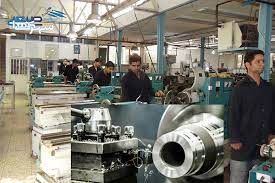In the world of machining and manufacturing, precision is paramount. Engineers and craftsmen continually seek innovative tools and techniques to ensure the accuracy and quality of their work. One such tool that plays a crucial role in achieving precision is the سنبه mandrel. This unassuming device may not always steal the limelight, but its significance in various industries cannot be overstated.
Cutting mandrels, often referred to as mandrels or arbors, are cylindrical or tapered devices used to hold and guide cutting tools during machining processes. These tools are instrumental in shaping and finishing various materials, including metals, plastics, and composites. The primary purpose of a cutting mandrel is to maintain the precise alignment and concentricity of the workpiece with the cutting tool, ensuring that the desired specifications are met.
The design of cutting mandrels can vary significantly, with some featuring a fixed geometry and others offering adjustable elements to accommodate different workpiece sizes and shapes. One of the standout features of cutting mandrels is their ability to reduce vibrations and chatter during machining, thereby enhancing the surface finish and dimensional accuracy of the final product. This reduction in vibrations is especially crucial when working with delicate materials or when creating intricate designs.
One common application of cutting mandrels is in the manufacturing of precision components, such as gears, bearings, and shafts. In such cases, the cutting mandrel ensures that the workpiece rotates uniformly and consistently, preventing any deviations or irregularities in the final product. This level of precision is crucial in industries like aerospace, automotive, and medical device manufacturing, where even the slightest deviation can lead to catastrophic consequences.
Furthermore, cutting mandrels are employed in various cutting processes, such as turning, milling, and grinding. In turning, for example, a lathe uses a cutting mandrel to secure the workpiece, allowing the cutting tool to remove material from its surface with unparalleled accuracy. Similarly, in milling and grinding, these mandrels play a pivotal role in holding and guiding the cutting tool to achieve the desired shape and finish.
